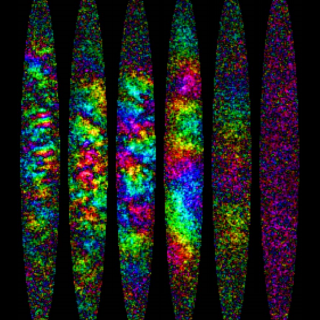
Non-equilibrium Dynamics
Assumptions of equilibrium and ergodicity lie at the heart of statistical mechanics, which seeks to capture the behavior of large collections of particles in terms of simple aggregate quantities such as energy, magnetization, and temperature. Recently, ultracold atoms have given us a new set of tools for creating highly isolated, exquisitely pure many-body systems. The interactions in these systems are tunable, allowing them to mimic solid-state systems or to realize completely novel systems with properties not found anywhere else. Furthermore, trapped atoms can be driven very far from equilibrium and can remain there for very long times. The attendant breakdown of the familiar concepts of thermodynamics and statistical mechanics represents an unprecedented opportunity to observe new phenomena, realize new phases of matter, and enhance understanding of complex quantum dynamics.
Particularly advantageous from the perspective of studying thermalization is the ability to change a system parameter faster than the equilibration timescale. This is known as a “quench.” The dynamics of observables following a quench contain a wealth of information that can be mined to better understand universal behavior. Ultracold atoms and ions also allow experimenters to implement “designer dynamics” by coupling to external sources of driving or dissipation, with a degree of precision unimaginable in solid-state devices. No longer limited by their “built-in” dynamics, these systems open up a fertile set of fundamental questions. What new phases or properties of matter can this new-found control of quantum systems allow us to create, study, and use?





















